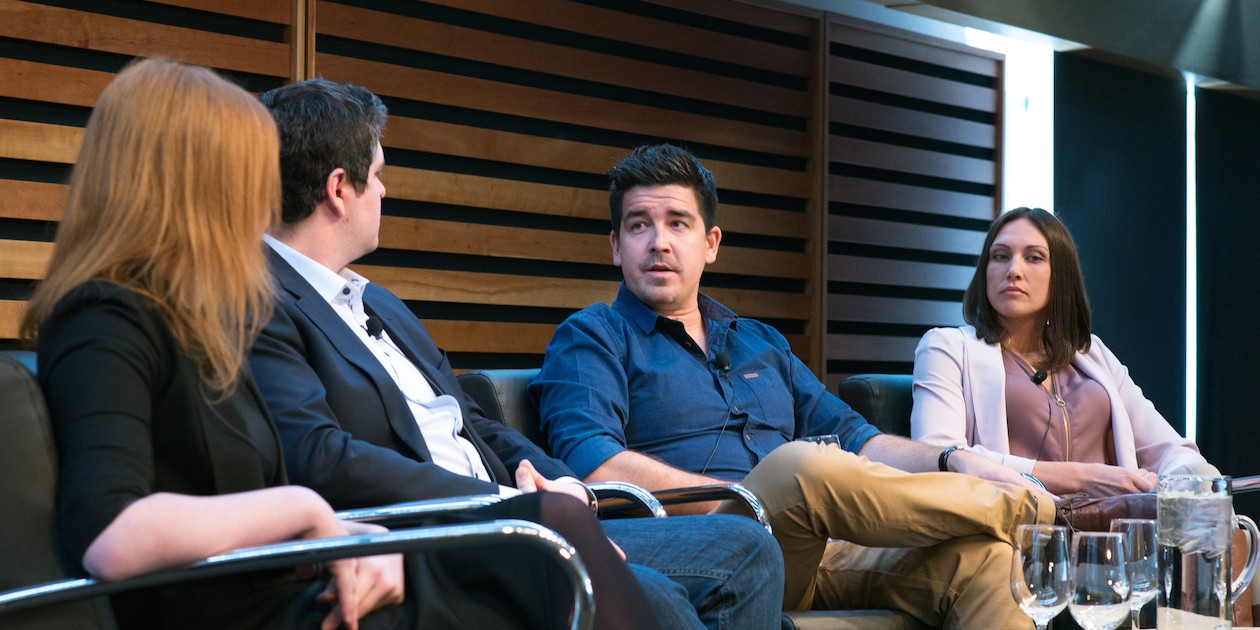AD-Vantage’s programmatic trading conference brought together experts from across Canada and the U.S. for a morning of conversation on all the trends affecting media automation — from supply chain transparency, to native advertising, to programmatic TV.
The morning’s opening keynote by Ian Hewetson, providing an extensive classification of under-the-table practices commonly used by networks, trading desks and other intermediaries along the supply chain, set the tone for the entire conference. Marketers who attended wanted to know what was being done to make programmatic more transparent and safe for the their brands — not just by online publishers, but by their agency partners as well.
At the agency trading desk 2.0 panel, independent agency One Advertising impressed the audience with its model of frank openness on fees, and allowing clients to have direct access to its reporting dashboard. MacLaren McCann’s Peter Vaz addressed the need for granularity in agency price reporting — letting advertisers see how much of their dollar is going to technology vendors, data costs and hard CPMs — and said the agency doesn’t stockpile direct sold digital media, to avoid conflicts of interest leading to arbitrage.
But ZenithOptimedia’s Veronica Holmes warned that there is such a thing as too much openness. “If you want access [to the reporting dashboard] from your agency, you should get it,” she said. “But you want to make sure you have the resources to do it. This can be like a rabbit hole… It can be a big distraction for clients, and I think that’s what they pay an agency for, to take the distraction away.”
Just what is ‘premium?’
Later on in the morning, the conversation shifted to emerging formats. CPAX’s Andrew Casale, TubeMogul’s Grant Le Riche, Kijiji’s Karla Stuewe and Rocket Fuel’s Lindsay Fordham gathered to talk about programmatic video and what “premium” means online today.
“When people think of video, they think of TV, of a really sexy format… There’s not a lot of that at all,” said Casale. “One of the interesting things about ad tech is we have a great capacity to create anything that we are lacking, and there is a huge inventory scarcity issue right now. What ad tech has done is created a lot more video.
“That started in the early days with in-banner video… More recently now we’re seeing native video, embedded within content… Is it premium? That’s up to the buyer.”
Jay Freedman, CRO for Nativo, a programmatic native advertising platform which works exclusively through Olive Media in Canada, talked about how programmatic distribution methods (like behavioural retargeting) can boost the effectiveness of native advertising. He said that Nativo often uses programmatic to do dynamic A/B testing on native content, which significantly boosts user engagement.
Nativo’s experiments have led to some insight about which native ads perform best online. Freedman said that tends to reflect what publishers already know: content performs better if it isn’t just ad copy dressed up as an article. He said brand content that uses the brand’s name in the headline is consistently among the least engaged-with on the platform.
“If the brand has the opportunity to put something directly in the editorial feed, it’s important that they put something that’s engaging, entertaining, informative and value-added to the consumer,” he said. “Take your branding cap off and actually think about something you, as a consumer, would want to read.”
Fighting Fraud
A panel of brand marketers from two of Canada’s top banks and Canadian Tire’s sports retail division brought the conference to a close. Both RBC’s Craig Jennings and BMO’s William Cormier said they’re much more confident about the fight against fraud today.
“I think I’ve been a lot more relaxed about it in the last little while because of a lot of things speakers today have said about the protections that they’re putting in place,” Jennings said. “I’m not unconcerned with ad fraud, but right now I’m willing to turn it over to my agencies and the supply side to tackle it for me.”
But the panelists were less comfortable about transparency along the supply chain. “You need to go beyond transparency, you need to make it user-friendly,” said FGL Sports’ Frederick Lecoq. He said marketers need a system where “you know how much money you put in, you know how much money the agency makes, you know where you’re being served and you understand the whole ecosystem.”
“We haven’t done a great job evangelizing programmatic within the organization, and we need to work on that,” he said.











